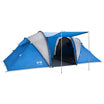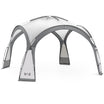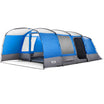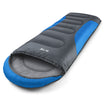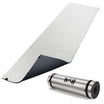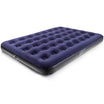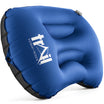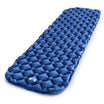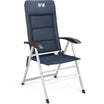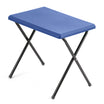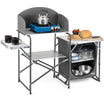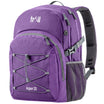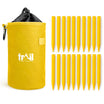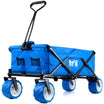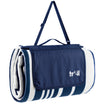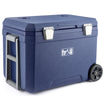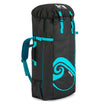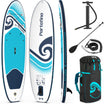The bittersweet feeling of summer ending and the colder seasons starting is one we all know too well. For many paddleboarders, it marks the time to pack their paddleboard away and say goodbye until next summer. However, what they may not realise is that cold weather paddleboarding can be just as fun as paddleboarding in the summer. If not more so. In this blog, we’ll help you discover the benefits of paddleboarding in cold weather and how best to prepare yourself before, during, and after you hit the water.
Benefits of Cold Weather Paddleboarding
Paddleboarding in cold weather can offer a unique and rewarding experience for those who are prepared and enjoy the outdoors, even in chillier conditions. Here are some benefits of paddleboarding in cold weather:

Solitude & Tranquillity
Cold weather often deters people from outdoor activities, so you may find you have the water to yourself. This can provide a peaceful and serene paddling experience.
Physical Challenge
Cold weather often deters people from outdoor activities, so you may find you have the water to yourself. This can provide a peaceful and serene paddling experience.
Fresh Air & Stunning Scenery
Cold weather often brings crisp, clear air and beautiful winter landscapes. Paddling in this environment can be incredibly refreshing and visually striking.
Wildlife Encounters
During the colder months, you may have a better chance of observing wildlife. Seabirds and seals are just some of the animals that are active during autumn and winter.
Mental Resilience
Paddleboarding in cold weather can test your mental toughness and adaptability, making you more resilient and better prepared for adverse weather conditions.

How to Prepare for Cold Weather Paddleboarding
Paddleboarding in cold weather requires careful preparation to ensure your safety and comfort. Here are some steps to help you get ready for a cold weather paddleboarding adventure:
|
Check the Weather Forecast Pay close attention to the weather forecast, including the air temperature, wind speed, and wind chill. You should also be aware of potential storms and rapidly changing weather. For your own safety, always avoid paddling in extreme weather conditions. Dress Appropriately Layering is key to staying warm while paddleboarding in cold weather. Consider the following clothing and gear:
Carry a waterproof phone case, a first aid kit, and an emergency whistle in case you need assistance. Monitor Conditions
While on the water, keep an eye on weather conditions, and be prepared to cut your paddle short if conditions deteriorate. Post-Paddle Routine
After your paddle, change into dry, warm clothing as soon as possible to avoid further cooling down. Consume warm beverages and high-energy foods to help raise your body temperature. |
Prepare Your Board Inspect your paddleboard and make sure it's in good condition. Cold weather can be hard on equipment, so check for any damage or wear and make any necessary repairs. Stay Located
Always have your location on if paddling in remote areas and make sure family and friends aware of it. We recommend using what3words for precise location information without the need for a phone signal. Be sure to keep your phone charged and stay safe. Plan Your Route
Choose a paddleboarding location that is suitable for cold weather and consider factors like wind direction and current. Let someone know your plans and establish a float plan if necessary. Buddy System
It's safer to paddle with a buddy at all times, but especially in cold weather, as they can aid in case of an emergency. Hydration & Nutrition
Cold weather can be dehydrating, so bring water and high-energy snacks to stay nourished and hydrated during your paddle. Warm-Up Exercises
Do some light warm-up exercises before hitting the water to get your blood flowing and reduce the risk of injury. Safety Precautions
Familiarise yourself with cold water safety, including how to recognise the signs of hypothermia and how to respond in case of a capsize. Practice self-rescue techniques. |
Remember that paddleboarding in cold weather can be more challenging and riskier than in warmer conditions, so it's crucial to prioritise safety and be well-prepared. If you're new to cold weather paddleboarding, consider taking a course or going with an experienced guide to learn the ropes.

